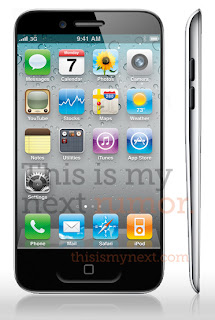With 4 generations of Apple’s iPhone out in the market (almost 5 generations since iPhone 5 is rumored to be released by September of this year), the smart phone has surely gone a long way, from a memory of 128 MB DRAM to 512 MB, from a 2.0 megapixel camera to a 5.0 megapixel camera, 412 MHz to 1 GHz. There’s no doubt that ever since this line of smart phone came out, they have been on the lead ever since. Let’s take a trip back to memory lane and see iPhone’s journey from square one to iPhone 4, and to the future with the rumored upcoming iPhone 5.
The first generation of iPhone was released on June 29, 2007 with only a 4gb version. Apple initially sold a good 270,000 units, not much when compared to their sales now. People were reported to line up in Apple Stores just to buy the device. The first iPhone’s casing was made of aluminum and plastic. The phone’s input was still a multi-touch screen.
July 11, 2008- Apple finally released the 2nd generation of its smart phone line, the iPhone 3G. It had the same camera resolution as with the first generation, 2.0 megapixels. It didn’t come with a 4 GB memory storage, but a good 16 GB. Instead of a silver metallic back cover, it came in black, glossy plastic. It was sleeker and slimmer and came in black and white. On its first month, Apple sold 3 million units, and people from all social class came to love the iPhone 3G.
The next generation iPhone, iPhone 3GS was announced on June 8, 2009 and was released on the same month, by June 19. The cell phone camera was upgraded to 3.0 megapixels. The CPU was upgraded to 833 MHz. The iPhone 3GS was physically the same with the iPhone 3G, but the processing speed was twice faster.
 The iPhone 4 was released on 2010 and used an A4 processing chip. It has a resolution of 900 x 640 dpi, the highest resolution for any phone and utilizes Apple’s patent Retina Display. iPhone 4 is the first iPhone to have a front camera which people use for video calls using Apple’s patent Face Time. It runs iOS 4 for its operating system and can record HD videos. iPhone 4 was criticized for its lack of substantial changes, including problems with dropping calls.
The iPhone 4 was released on 2010 and used an A4 processing chip. It has a resolution of 900 x 640 dpi, the highest resolution for any phone and utilizes Apple’s patent Retina Display. iPhone 4 is the first iPhone to have a front camera which people use for video calls using Apple’s patent Face Time. It runs iOS 4 for its operating system and can record HD videos. iPhone 4 was criticized for its lack of substantial changes, including problems with dropping calls.The iPhone 5 is rumored to be using the ultra fast processor, the A5 chip, which iPad 2 is currently using and a newer operating system, the iOS 5. It will also come with an 8.0 megapixel camera and is reported to have a slide out keyboard. Gossip has it that this smart phone will be slimmer, sleeker and will look more like the iPod Touch 4, with a tear drop shape from top to bottom.
Recent rumors have pointed to the next-generation iPhone hardware launching in the fall instead of the usual summer timeframe. Now, new sources with "direct knowledge" of Apple's supply chain are saying the device should begin manufacturing in late July or early August, in time for a September launch.
Reuters cited three sources with inside knowledge of Apple's plans for the iPhone 5, which agreed that the design will largely be unchanged. The major difference will be a "faster processor"—undoubtedly the A5 processor used in the iPad 2. 

Beyond the promise of a "faster processor," not exactly the most shocking revelation, the sources for Reuters also claimed a September introduction for the updated iPhone. Previous rumors were less precise, merely indicating a later "fall" launch, leading many to conclude Apple would introduce the new iPhone alongside updated iPod touch devices in September—the usual timeframe for iPod updates.
One possible major change not mentioned by Reuters' sources is that the iPhone 5 might use dual-mode Qualcomm baseband chips that are capable of connecting to both GSM/HSPA and CDMA/EVDO networks. The CDMA-compatible iPhone 4 launched earlier this year makes use of such a chip, but the GSM capabilities are disabled. It's further possible that moving the iPhone 5 introduction to the fall will give Apple a chance to use next-generation Qualcomm chips that are also compatible with 4G LTE networks.
Other rumored improvements for the iPhone 5 not discussed in the Reuters report include an 8 megapixel camera and integration of NFC hardware, possibly connected to an iTunes-based mobile payment service.
The latest information we have been hearing about the iPhone 5 is that it will have 2 different versions released. An Apple parts supplier has stated that Apple has been ordering two sets of every component in varying quality. This leads us to believe their will be a Standard version of the iPhone 5, as well as a Pro version with a higher quality design as well as a higher price tag.







ليست هناك تعليقات:
إرسال تعليق